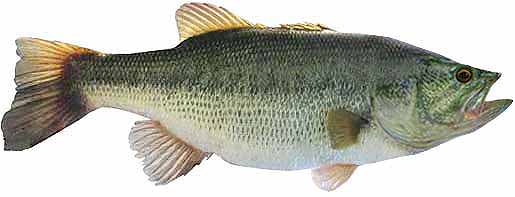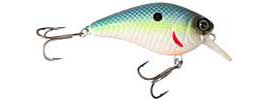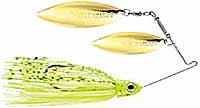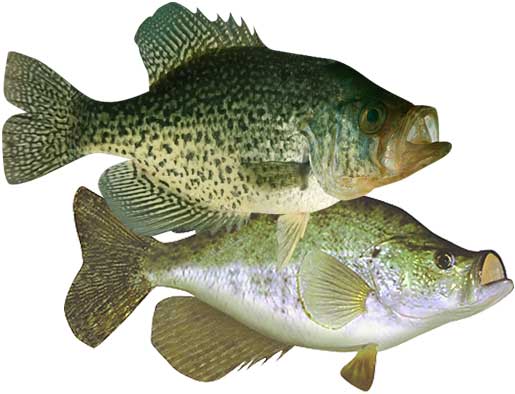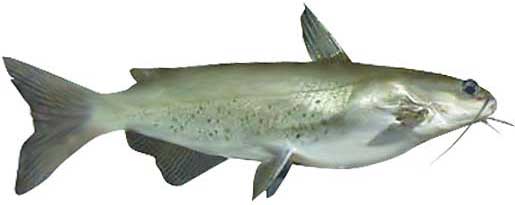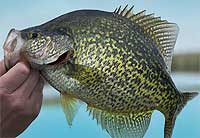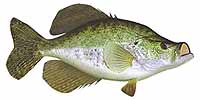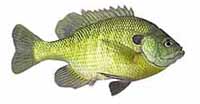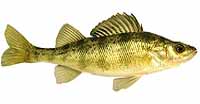Fishing Report For Grand Lake St Marys, OH
AKA: St Marys Lake
By Rick Seaman
Last updated on .
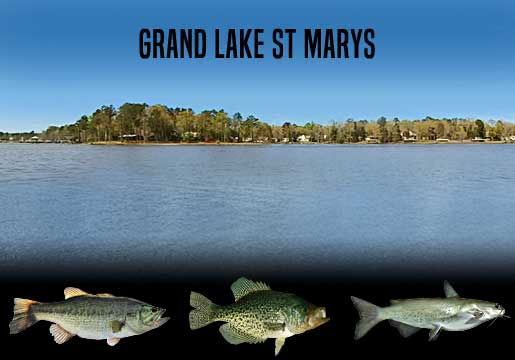
Fishing Reports
Popular Fish Species Grand Lake St Marys, OH
Largemouth Bass
Current Report: Fair
Largemouth bass have limited holding options in Grand Lake St Marys, as the majority of the lake is less than 7 feet deep.
FALL. Now that Fall has arrived, bass here have moved shallow, following schools of baitfish into coves and shallow bays around 3 to 7 feet of water. Rip rap, brush, fallen trees and docks are the feeding grounds. Rip rap, which holds crawfish, can be found in small areas around the lake. Some good rip rap, or brushy, feeding areas include Little Chickasaw Creek, Windy Point, and the area from Grand Lake Saint Marys State Park to the Dog Park. Locals report good success with square-bill crankbaits and spinnerbaits. Currently topwater, jerkbaits, and slow-rolled spinnerbaits are also catching bass. Later in Fall, as the water cools, bait and bass move out to the deepest cover where jigs and drop shots are often good choices.
WINTER. Winter will isolate largemouth around slightly deeper cover. They can be found from 4 to 7 feet deep. Here they hold, feeding less frequently, awaiting warmer water to return in Spring. Slow presentations are a big key to getting bites. On warmer days, especially during late afternoons, bass may move into 2 to 5 feet of water to feed.
SPRING. Once water temperatures rise into the low 60's, largemouth will move from deep wintering holes, to shallower water nearby spawning areas. Protected pockets along the west and south shores are typically active spawning areas. Vibrating jigs, jerkbaits and spinnerbaits typically get bites just away from the shoreline. At this time they are feeding aggressively in about 2 to 6 feet of water, preparing for the spawn. Once water warms into the mid to high 60's, they will move into 2 to 4 feet of water, and create nests, then lay their eggs. Immediately afterwards, females move to deeper water and males remain to guard the eggs, and then the fry. After a couple weeks, the males also move to slightly deeper water. Deep-diving crankbaits, vibrating jigs, plastic worms and swimbaits are catching bass during this period.
SUMMER. Water temperatures will warm considerably in Summer. Bass will feed shallow, early and late in the day, where they will be caught in 3 to 7 feet of water, on square-bill crankbaits and spinnerbaits. Wacky-rigged stick worms always catch finicky bass when the bite is slow. Largemouth bass here feed on gizzard shad, small sunfish and crawfish. During the hotter parts of the day, they are being caught on in the deeper regions of the lake. Some of the best reports seem to be from anglers fishing around the east side of the lake, as well as the northwest corner.
Black & White Crappie
Current Report: Good
FALL. Baitfish, which are moving into shallow flats, pockets, canals and bays, are drawing crappie into these areas. Crappie fishing is decent now, with locals reporting occasional slabs up to two pounds. Canals lined with rip rap shorelines, docks, and planted brush piles are holding crappie.They are feeding heavily in preparation for the cold Winter, in 3 to 7 feet of water. Minnows, hair jigs, and crappie jigs, are good options during this feeding marathon. Late fall starts the migration deeper, toward winter holding areas, for both crappie and baitfish. Good results are coming around brush piles.
WINTER. Once the shallows start cooling rapidly, crappie will migrate to deeper holding areas, mostly off shore. At this time they are typically caught using a very slow presentation, in 6 to 7 feet of water. Most are caught around deep brush piles. During warming trends, especially warm afternoons, they are drawn into 4 to 5 feet of water to feed.
SPRING. In early Spring, crappie begin staging in 2 to 6 feet of water, just outside spawning bays and shallow flats. The west bank, south shore, channels canals, pockets, and marinas, especially near Montezuma and St. Marys are popular spots. Spring is prime time to be on the water, as both black crappie and white crappie have moved shallow to spawn. At that time, they are typically caught in 2 to 4 feet of water. Vegetation, docks, brush and wood are where most anglers catch crappie using small crappie jigs or live minnows. After the spawn, crappie typically move outside the spawning area and hold on cover close by, in 4 to 6 feet of water. Light tackle, with 4 lb to 8 lb line, is a popular choice.
SUMMER. Water temperatures get quite warm, and crappie fishing is usually pretty good. They feed in 3 to 5 feet of water early and late in the day, until the hot Summer sun causes them to retreat to depths of 6 to 7 feet. Also, a few have embedded in the shade of slightly shallower vegetation. This is a good time to focus around brush piles and vegetation.
Channel Catfish
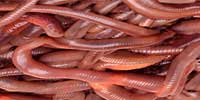

Current Report: Fair To Good
FALL. Fall is one of the better times of year for catching channel catfish. Local anglers report catching channel cats along rip rap shorelines. Short casts, out from shore using cut bait, worms and shrimp, among other popular catfish baits. Early in Fall they cruise the 3 to 6 feet deep shallows, in search of food. Later, in the season they migrate away from the shallows, to the main body of the lake. They can typically be found from 6 to 7 feet deep. Fishing for channel catfish is often productive while drift fishing or slow-trolling baits. Use a slip sinker or Carolina rig setup, with nightcrawlers, shrimp or prepared baits.
WINTER. In Winter, the channel cats gather in deep holes and go virtually dormant, especially if water cools into the low 40's. They hole up in pockets in the basin from 6 to 8 feet deep and await warmer water. Slow presentations, especially cut bait, can still entice strikes. Often during mid day, in late afternoon, anglers often catch them a bit shallower.
SPRING. In Spring, when water temperatures rise into the high 40's, channel catfish start their migration into coves and up river. Early in the season, look for them in 3 to 6 feet of water. They hold here, and feed aggressively, around relatively shallow cover until water warms into the mid 70's, at which time they begin the spawn process. Anglers are using slip sinkers, 3-way rigs, or Carolina rigs to get, and keep, the bait close to the bottom. Later in Spring, focus on deeper flats into late evening.
SUMMER. In Summer, channel catfish are scattering, locating cover in slightly cooler water. Reports indicate the most successful anglers are using nightcrawlers, cut bait, minnows or shrimp in 5 to 8 feet during the day, and 3 to 6 feet during the night. Fishing from late in the day until midnight produces some of the best results, as this is their prime feeding time. The north shore and the west bank are popular areas.
Fishing Video
Fish species to fish for...
Guide to fishing for largemouth bass, channel catfish, flathead catfish, black crappie, white crappie, walleye, bluegill and yellow perch at Grand Lake St Marys in Ohio.
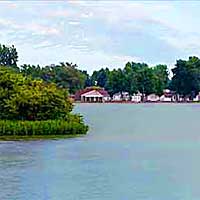 Grand Lake St Marys is a 12,700-acre lake, with 52 miles of shoreline offering excellent fishing for perch, bluegill, walleye, crappie, catfish and bass. Ice fishing is popular in winter, when the ice is safe, for crappie, bluegill and yellow perch.
Grand Lake St Marys is a 12,700-acre lake, with 52 miles of shoreline offering excellent fishing for perch, bluegill, walleye, crappie, catfish and bass. Ice fishing is popular in winter, when the ice is safe, for crappie, bluegill and yellow perch.
Primary fish species to catch
Click images for fishing tips and details about each species.
Today's Weather & Forecast
Fishing Boat Rentals
Click here for fishing boat rentals.
Click here for boat ramps.
Marinas
Click here for marinas.
Fishing License
Click here for a Ohio Fishing License.
Map - Fishing & Access
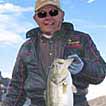 Rick Seaman is a fishing enthusiast with over five decades of fishing experience, a retired tournament fisherman, author of numerous published articles on fishing, and co-author of the book "Bass Fishing - It's not WHAT you throw, It's WHERE you throw it".
Rick Seaman is a fishing enthusiast with over five decades of fishing experience, a retired tournament fisherman, author of numerous published articles on fishing, and co-author of the book "Bass Fishing - It's not WHAT you throw, It's WHERE you throw it".
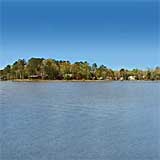 Contact Information
Contact Information
Grand Lake St. Marys State Park
34 Edgewater Drive
St. Marys, Ohio 45885
419 394-3611
Fishing lakes in each state
102525
Grand Lake St Marys Report
OHIO


Grand Lake St Marys offers a wide variety of fishing opportunities in northwest Ohio.


